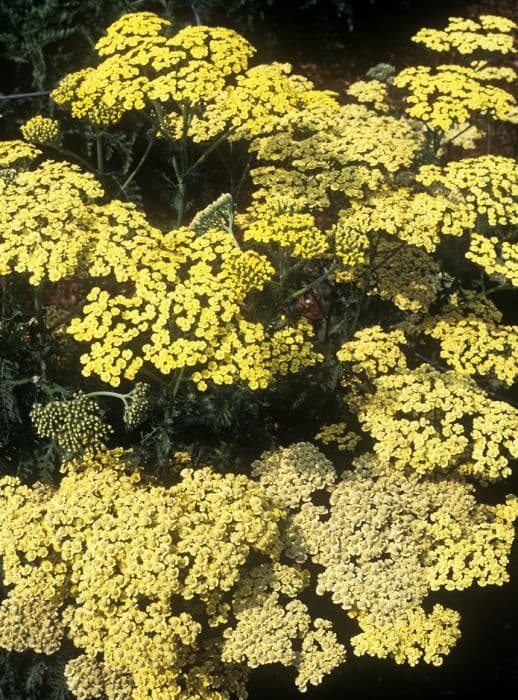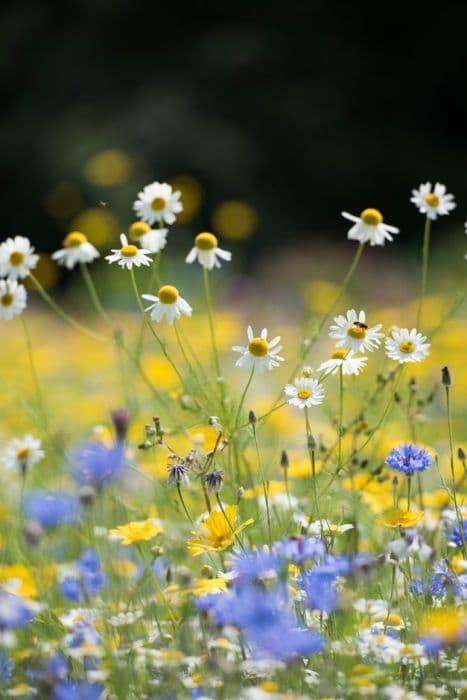New York Ironweed Vernonia noveboracensis











ABOUT
The plant known commonly as New York ironweed is a perennial flower that boasts a striking, upright posture with a robust and bristly texture. It is adorned with dense clusters of small, fluffy, deep purple to magenta flowers. These bunches of blossoms, which can be numerous, form at the tops of the plant and create a dome-like shape, giving the plant an almost regal crown. Each individual flower within the clusters comprises slender, thread-like petals that radiate around a central disk. This lush floral display emerges from a backdrop of lance-shaped, dark green leaves that provide an excellent contrast to the vivid hues of the blooms. The leaves themselves are often long and narrow, with toothed edges and a rough texture, arranged alternately along the stiff stems. Overall, New York ironweed exudes a natural, wild presence and provides a burst of late summer to early fall color, attracting a variety of pollinators like butterflies and bees to its nectar-rich flowers.
About this plant
 Names
NamesFamily
Asteraceae
Synonyms
New York Ironweed, Vein-Leaf Hawkweed
Common names
Vernonia noveboracensis var. latifolia, Vernonia noveboracensis var. noveboracensis, Vernonia noveboracensis var. typica
 Toxicity
ToxicityTo humans
New York ironweed is generally not considered toxic to humans. There is little to no evidence suggesting that the plant poses any significant risk when touched or ingested in small quantities. However, as with any plant, it is possible for individuals to have allergic reactions or sensitivities, so it's always wise to exercise caution and avoid ingesting plants unless they are known to be safe and are being consumed as part of a traditional use or dietary practice.
To pets
New York ironweed is not commonly listed as a toxic plant to pets such as dogs and cats. It is not known to contain any toxic compounds that would typically cause poisoning in pets. As always, it's best to prevent pets from ingesting plants not intended for their consumption, as individual animals might have unique sensitivities. If a pet were to consume a large amount of any non-food plant, there is a risk of gastrointestinal upset, such as vomiting or diarrhea, simply due to the ingestion of non-digestible matter.
 Characteristics
CharacteristicsLife cycle
Perennials
Foliage type
Deciduous
Color of leaves
Green
Flower color
Purple
Height
3-6 feet (0.91-1.83 meters)
Spread
2-4 feet (0.61-1.22 meters)
Plant type
Herb
Hardiness zones
5
Native area
North America
Benefits
 General Benefits
General Benefits- Attracts pollinators: Vernonia noveboracensis, commonly known as New York ironweed, is known to attract bees, butterflies, and other beneficial insects, supporting the local ecosystem.
- Native plant gardening: As a native species to parts of North America, incorporating New York ironweed into gardens can help preserve local biodiversity and natural heritage.
- Erosion control: The deep root systems of New York ironweed make it effective at stabilizing soil, which can help prevent erosion on slopes and banks.
- Habitat creation: It provides food and habitat for various species of wildlife, including birds that feed on its seeds and insects that rely on it throughout their life cycles.
- Drought tolerance: New York ironweed is relatively drought-resistant once established, making it suitable for xeriscaping and reducing the need for supplementary watering in dry periods.
- Aesthetic appeal: With its tall stems and vibrant purple flowers, New York ironweed is valued for its ornamental qualities and ability to add visual interest and height to garden landscapes.
- Low maintenance: It requires minimal care once established, making it an easy choice for gardeners who prefer a more naturalized or low-maintenance approach to landscaping.
 Medical Properties
Medical Properties- Anti-inflammatory: Vernonia noveboracensis is traditionally used for its anti-inflammatory properties to ease conditions like arthritis.
- Diuretic: It is known to have diuretic effects, which can help in flushing out excess fluids from the body.
- Astringent: The astringent quality of the plant makes it useful in toning and tightening tissues, which can be beneficial in wound healing.
- Emmenagogue: The plant has been used historically to promote menstrual flow.
- Gastrointestinal aid: The plant can aid in digestion and has been used to treat issues like intestinal worms.
- Vulnerary: It is used for its wound-healing properties, assisting in the recovery of cuts and bruises.
 Air-purifying Qualities
Air-purifying QualitiesThis plant is not specifically known for air purifying qualities.
 Other Uses
Other Uses- Vernonia noveboracensis, commonly known as New York ironweed, can be used as a natural dye, where the parts of the plant impart a range of colors to fabrics depending on the mordant used.
- The plant’s tough stem fibers may be suitable for paper making, involving processes to break down and reform the fibers into a pulp for handcrafted paper.
- New York ironweed has been used in traditional basket weaving practices as fiber reinforcement or as a natural decorative element in the weave.
- Its tall, robust nature allows the use of New York ironweed as a natural support for climbing plants or garden vegetables in agricultural settings.
- The dried stems of the plant can serve as kindling or as part of biomass briquettes for sustainable fuel options.
- Its attractiveness to pollinators makes New York ironweed a suitable choice for butterfly gardens or pollinator-friendly landscaping to support biodiversity.
- The plant can be incorporated into educational programs as a representative species for studying native plant growth and propagation techniques.
- Garden designers sometimes use New York ironweed for its aesthetic appeal in rain gardens to handle excess water runoff in an environmentally friendly way.
- The flowers of the New York ironweed can be pressed and used in botanical art and decoration, adding natural elements to creative projects.
- In floral arrangements, both fresh and dried inflorescences of New York ironweed add height and texture, enhancing the complexity of the design.
Interesting Facts
 Feng Shui
Feng ShuiThe New York Ironweed is not used in Feng Shui practice.
 Zodiac Sign Compitability
Zodiac Sign CompitabilityThe New York Ironweed is not used in astrology practice.
 Plant Symbolism
Plant Symbolism- Resilience: Vernonia noveboracensis, commonly known as New York Ironweed, thrives in tough environments and conditions, embodying the spirit of tenacity and the ability to weather challenges.
- Survival: New York Ironweed's ability to grow in poor soils and its tough, durable nature symbolize survival and the capacity to persist despite adversity.
- Transformation: With its striking purple flowers that bloom from late summer to fall, it serves as a symbol of transformation and the beauty that emerges from change.
- Native Pride: As it is native to the Northeastern United States, it can symbolize local pride or the beauty of natural, indigenous flora.
 Water
WaterThe New York ironweed should be watered deeply once a week, providing about one inch of water or roughly 0.6 gallons per square yard of soil, to ensure the water reaches the deep roots. During periods of high heat or drought, it may require additional water, possibly twice a week, to keep the soil consistently moist but not soggy. Avoid overhead watering to prevent diseases; instead, water at the base of the plant early in the morning. During the fall and winter months, watering can be reduced as the plant goes dormant and the natural rainfall typically provides adequate moisture.
 Light
LightNew York ironweed thrives in full sun, so the best spot for this plant is an area that receives at least six hours of direct sunlight per day. It can tolerate some light shade, especially in the hotter regions, but too much shade can lead to leggy growth and fewer flowers. The brightness of unfiltered sunlight will ensure the plant grows strong and produces vibrant blooms.
 Temperature
TemperatureNew York ironweed does well in a range of temperatures, from as low as 30°F to as high as 90°F. However, the ideal growing temperatures are between 60°F and 80°F. It is a hardy plant that can survive the first frosts of fall and can endure summer heat as long as it has sufficient moisture.
 Pruning
PruningPruning New York ironweed is done to maintain its shape, encourage bushier growth, and promote more abundant flowering. The best time to prune is in late winter or early spring before new growth begins. It's recommended to cut back the previous year's growth to about one-third of its size to rejuvenate the plant and facilitate a more controlled form.
 Cleaning
CleaningAs needed
 Soil
SoilNew York ironweed prefers rich, moist soil with good drainage. The ideal soil pH is between 5.5 and 6.8. A mix of garden soil, compost, and a bit of sand would provide nutrients and proper aeration.
 Repotting
RepottingNew York ironweed is typically not repotted as it is a perennial that is best grown outdoors. It can be divided every few years to manage its size.
 Humidity & Misting
Humidity & MistingNew York ironweed thrives in average outdoor humidity levels; it does not require any special humidity considerations.
 Suitable locations
Suitable locationsIndoor
Ensure full sun, moist soil, and sufficient space for growth.
Outdoor
Plant in full sun with moist soil; divide every few years.
Hardiness zone
5-9 USDA
 Life cycle
Life cycleVernonia noveboracensis, commonly known as New York ironweed, begins its life as a seed that requires a period of cold stratification to germinate. After stratification, the seed germinates in the spring, growing into a seedling with characteristic narrow, lance-shaped leaves. As a perennial, it develops a robust root system and shoots that grow into a tall, upright form, reaching 4 to 7 feet in height by the peak of summer. The plant then blooms in late summer to early fall, displaying dense clusters of small, purple, tufted flowers that attract pollinators such as butterflies and bees. Following pollination, the flowers develop into achenes, which are small, dry, one-seeded fruits with tufts of hair that aid in wind dispersal. The plant then dies back in the winter, with the root system remaining alive to regenerate the New York ironweed the following spring.
 Propogation
PropogationPropogation time
Spring-summer
Vernonia noveboracensis, commonly known as New York ironweed, is often propagated through seed since it's the most popular method. The best time to propagate New York ironweed by seed is in the fall, allowing nature to stratify the seeds over winter. To propagate by seed, one should scatter the seeds on the surface of a well-draining seed starting mix, pressing them lightly into the medium without covering them as they require light for germination. Keep the soil moist but not waterlogged, and place the pot in a location where it will receive gentle warmth and indirect light. Germination typically occurs in the spring as temperatures rise. Once seedlings have developed a few sets of true leaves, they can be transplanted to individual pots and then eventually moved outdoors to their final growing location.









